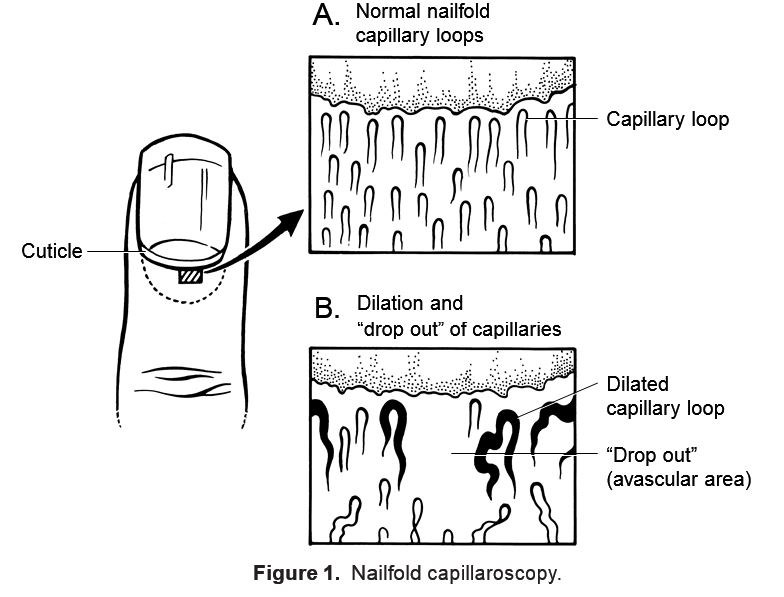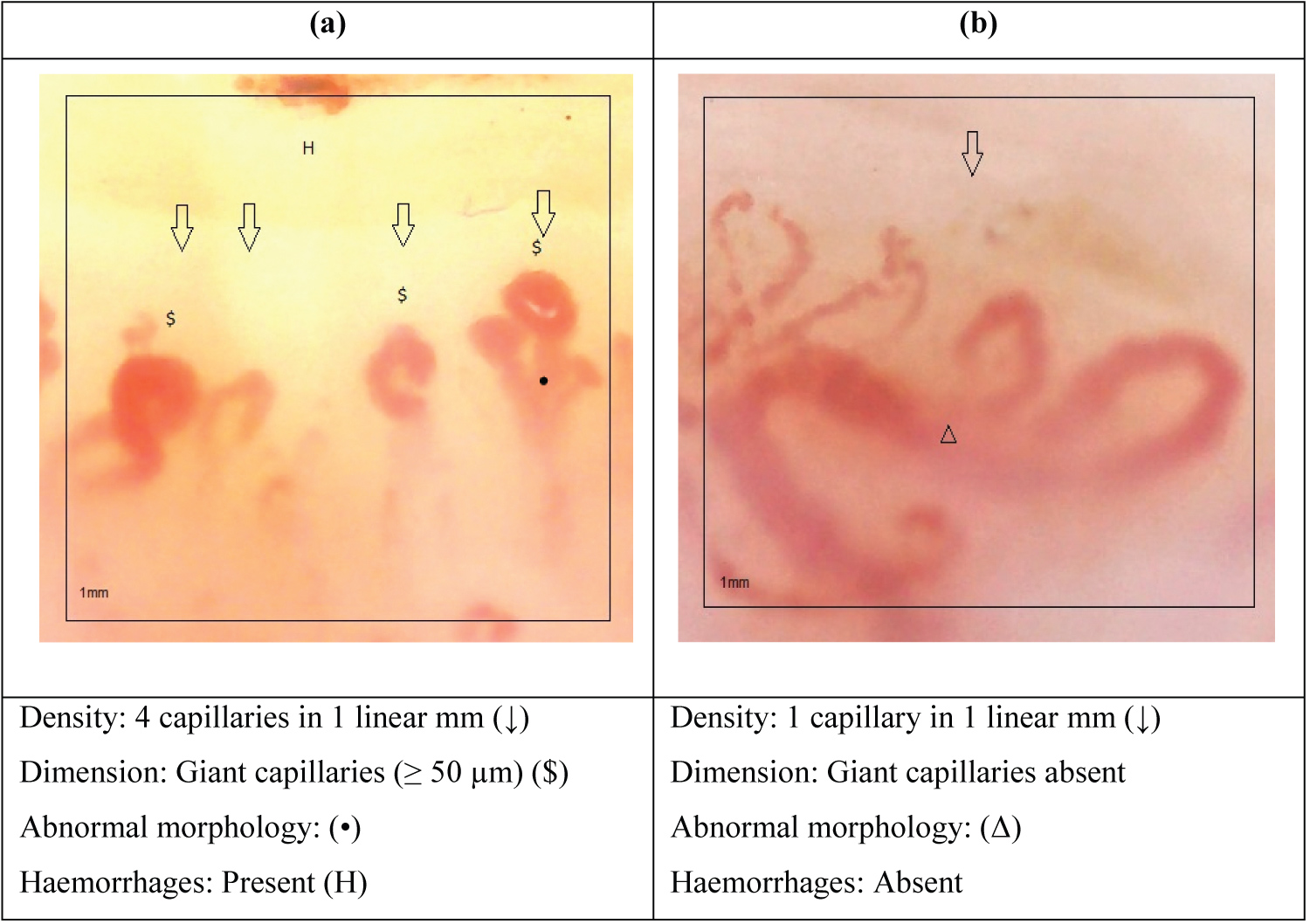nailfold capillaroscopy in raynaud’s disease

Nailfold capillaroscopy is a non-invasive diagnostic test that involves examining the small blood vessels (capillaries) located in the nailbeds of the fingers or toes. It is commonly used to assess the health of the microcirculation and to diagnose certain conditions such as connective tissue disorders and scleroderma.
Raynaud’s disease, also known as Raynaud’s phenomenon, is a condition in which the blood vessels in the fingers and toes constrict excessively in response to cold temperatures or stress, resulting in a lack of blood flow to the affected areas. Nailfold capillaroscopy may be used to diagnose Raynaud’s disease by evaluating the capillary patterns in the nailbeds.
To perform nailfold capillaroscopy for the purpose of diagnosing Raynaud’s disease, follow these steps:
- Gather the necessary equipment, including a microscope, capillaroscope, and disposable gloves.
- Wash your hands thoroughly with soap and water to remove any dirt or debris that may interfere with the examination.
- Put on the disposable gloves to prevent contamination.
- Choose the finger or toe that you want to examine and gently clean the nailbed with a mild disinfectant solution.
- Place the finger or toe under the microscope and adjust the focus so that the capillaries are clearly visible.
- Examine the capillaries using the capillaroscope, paying particular attention to their size, shape, and density. In individuals with Raynaud’s disease, the capillaries may be dilated or distorted.
- Record your observations, including any abnormalities that you may notice.
- Repeat the process on the other fingers or toes as needed.
- When you have finished the examination, remove the gloves and wash your hands again to prevent contamination.
It is important to follow proper sterile technique when performing nailfold capillaroscopy to avoid contamination and ensure accurate results. If you are not trained in this
 procedure, it is recommended that you seek guidance from a healthcare professional.
procedure, it is recommended that you seek guidance from a healthcare professional.
Related Items


 procedure, it is recommended that you seek guidance from a healthcare professional.
procedure, it is recommended that you seek guidance from a healthcare professional.